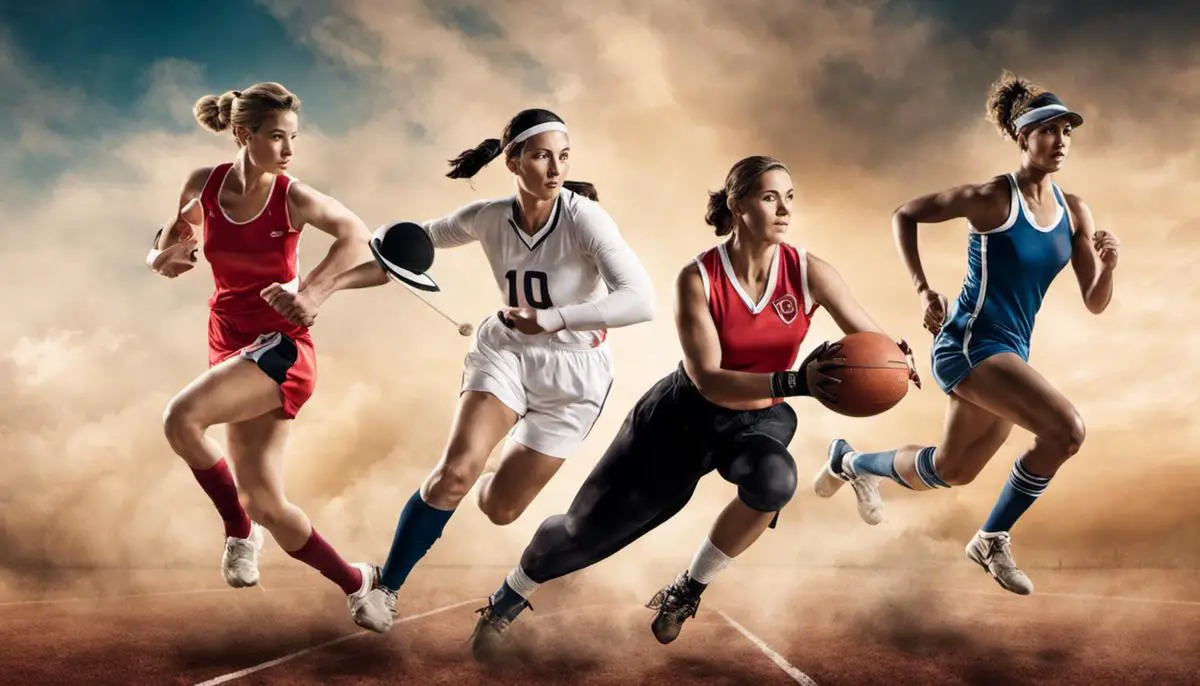The world of sports, often perceived as a man’s domain, has been punctuated by persistent struggles and triumphant victories of women that have been instrumental in redefining gender norms over the years. The perseverance of women, championed by numerous historical figures, has laid the foundation for a paradigm shift in women’s involvement in sports. From the initial resistance to women’s participation to the current recognition and acceptance of female athletes, this journey has been marked by resilience and determination. As we delve into the state of women in sports today, we consider not only their achievements but also the disparities that persist across different fields. Gender equality, particularly in sports, is an ongoing discourse that affects numerous aspects – from opportunities, funding, and media coverage, to wages. The inspirational stories of several female athletes serve as testaments to their strength and tenacity, and give us hope for an inclusive and equal future in sports.
Historical Background of Women in Sports
The Initial Resistance
Women’s participation in sports has a largely contested history. The traditional and cultural barriers often restricted women’s involvement in sports in the past. Until the late 19th century, women were considered physiologically unsuited for sports, with beliefs that intensive physical activities were hazardous to their health. Additionally, some societies deemed sports unladylike or inappropriate for women, adding to this resistance.
Early Trailblazers in Women’s Sports
Despite these challenges, several individual women pursued athletics and became pioneers in their sports during the early 20th century. In 1922, Suzanne Lenglen, a French tennis player, became one of the first female professional athletes. In golf, Mildred Ella “Babe” Didrikson Zaharias was an outstanding American athlete who excelled in basketball, track and field, and golf. Similarly, Gertrude Ederle made history by becoming the first woman to swim across the English Channel in 1926.
The Turn of the Century: A Shift in Perspective
The beginning of the 20th century saw an increase in women’s sports participation. The inclusion of women events in Olympics in 1900 marked a considerable breakthrough, even though the number of sports that women could take part in were severely limited. Gradually, the representation and recognition of women in sports began to increase, but it wasn’t until the second half of the century that significant changes transpired.
Title IX and the Surge in Female Athletes
Perhaps one of the most influential moments in U.S. history for women in sports was the establishment of Title IX in 1972. This federal law prohibits sex discrimination in any educational program or activity that receives federal funding. This includes athletic programs. Since then, the U.S. has seen an exponential increase in the participation of women and girls in sports. It has dramatically improved equal opportunity access for females in the traditionally male-dominated sports world.
The Battle for Equal Recognition and Pay in Sports
Even with the strides towards equality, significant disparities still exist in terms of recognition and pay between male and female athletes. The U.S. Women’s Soccer team’s lawsuit against the U.S Soccer Federation for equal pay in 2016 is a recent illustration of this ongoing struggle. Despite their exceptional performance, including winning four World Cups, they were being paid significantly less than their male counterparts. This has sparked a wide-ranging debate and emphasized the fight for parity in sports.
Modern Day Women in Sports
The modern sports landscape is witnessing a dynamic shift as women shatter ceilings in a wide range of sports, spanning tennis, soccer, basketball, and gymnastics. Athletes like Serena Williams, Simone Biles, and Megan Rapinoe are succeeding beyond just their sports; they are using their platforms to advocate for women’s rights, equality, and acknowledgment within the sporting world. Their achievements and trials are reshaping society’s view of women in sports and challenging standard norms. Amid significant strides, the quest for absolute equality for women in sports remains an ongoing challenge fuelled by the relentless determination of those advocating for change, both within and outside their sporting arenas.
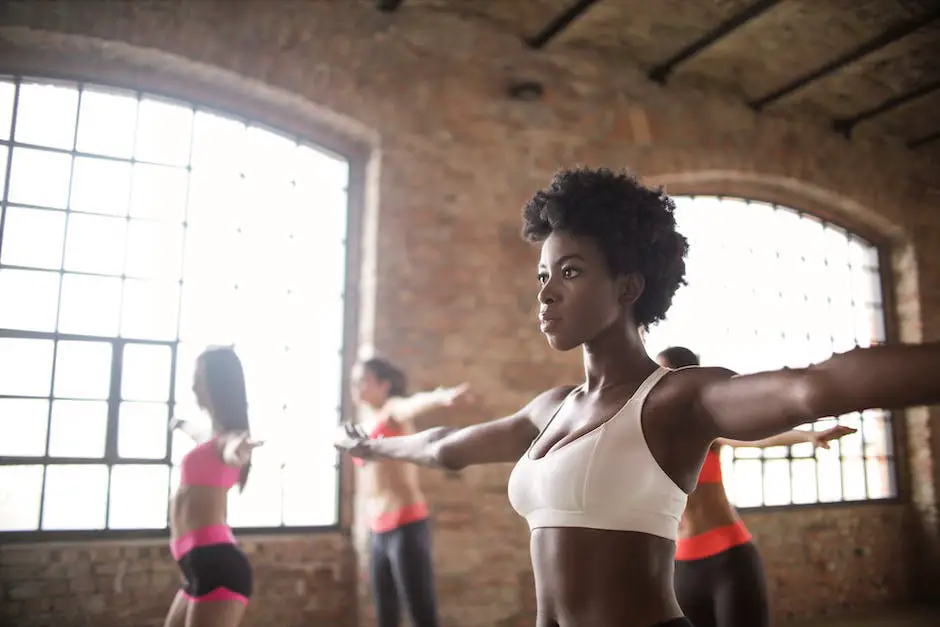
Current State of Women in Sports
Current State of Women in Sports
The sporting sphere has witnessed an uplifting surge in women’s participation around the globe in recent times. This substantial uptick in women’s involvement in sports is a direct outcome of the strides made in the struggle for gender equality. This progress has provided women with the much-needed platform to display their prowess in a variety of athletic events, thereby dispelling ingrained stereotypes about a woman’s physical abilities.
Progress Made
The progress accomplished so far by women in sports is nothing short of extraordinary. One key indicator of this is the near even representation of women at many international multi-sport events. In the 2021 Tokyo Summer Olympic Games, nearly 49 percent of the athletes were women, marking a historical high in the Olympic Movement. Such representation is a massive leap from the 1896 Games, where no women competed. Back then, women in sports were seen as an oddity or a curiosity, but those narratives have shifted over the more than a century of advocacy and competition.
Existing Disparities
Despite the impressive strides achieved, disparities are still present in women’s sports. Unequal pay between male and female athletes remains a contentious issue to date. Although some female athletes such as tennis player Serena Williams and soccer player Megan Rapinoe have gained international fame and financial success, for many female athletes, unequal pay is a reality. Compared to male athletes, women are paid less in prize money and salaries.
On top of that, women’s sports receive substantially less media coverage than men’s sports. According to the Women’s Media Center, only 4% of sports media content is dedicated to women’s sports. This limited exposure widens the gap between the sexes as it hinders the growth and popularity of women’s sports, and subsequently, the commercial returns that the athletes earn.
Women in Athletic Governance
As of 2021, the percentage of women on the International Olympic Committee (IOC) is 37.5%. Although this representation is considerably higher than in the past, women’s representation remains lower compared to their male counterparts. The fact that larger sports governing bodies like FIFA and the IOC have never had a female president further highlights this discrepancy.
Women’s Contributions to Sports
In the realm of sports today, women are establishing their significance through multiple roles, moving beyond the traditional confines. As athletes, coaches, referees, administrators, journalists, and even passionate fans, they are proving their competencies at par with men. Their diverse roles signify their vast contributions towards the development and sustenance of various sports.

Gender Equality in Sports
Progress Towards Gender Equality in Sports
After years of being a male-centric arena, sports is gradually witnessing the emergence of gender equality. Shaking off the age-old prejudices, women are gradually claiming their rightful equal opportunities. In fact, the introduction of Title IX in the USA in 1972 was a significant milestone, outlawing sex-based discrimination in educational institutions. While this has fostered women’s increased participation in sports, there is still a long way to go. A study in 2016 by the Women’s Sports Foundation revealed a persistent disparity where, despite representing more than 40% of college sports participants, women only attract 24% of the total athletic recruiting funds.
Gender Equality in Sports: Funding and Wages
There is also a well-documented disparity in funding and wages between male and female athletes. The profession of being an athlete is one of the top occupations in which the wage gap is glaringly evident. For instance, the U.S. Women’s National Soccer Team, despite their superior performance on the world stage, are still fighting for equal pay with their male counterparts. This discrepancy in funding is not just limited to pay but extends to resources such as training facilities, coaching, and medical treatment as well.
Media Coverage
Media coverage of women’s sports is another area in which inequality is prevalent. A study from the University of Minnesota’s Tucker Center for Research on Girls & Women in Sport found that ESPN’s SportsCenter dedicated just 2% of its coverage to women’s sports in 2014. While this figure has improved steadily over the years, it remains disproportionate when compared to men’s sports.
Causes, Impacts, and Solutions
The reasons behind these disparities are complex and multi-faceted. They range from societal stereotypes and norms that position sports as a predominantly ‘male’ endeavor to entrenched institutional biases within sporting organizations and the media. The differential treatment of male and female athletes can contribute to a lower level of self-esteem and self-worth among female athletes, and discourages young girls from participating in sports.
However, there are several ways in which gender equality in sports can be improved. These include increasing the visibility of women’s sports through enhanced media coverage, allocating equitable funding and resources for female athletes, and enacting policies that require sports organizations to promote gender equality. Additionally, increasing the number of women in leadership positions within sporting organizations can also help to drive change from within. It is essential to acknowledge that gender equality in sports is not just a women’s issue; it’s a societal issue that requires collective efforts from everyone in the sports community.
Drawing Conclusions
There’s no doubt that significant strides have been made toward achieving gender parity in sports. Nevertheless, it’s clear that further efforts and unwavering perseverance are needed to transform the system fundamentally. Fostering equality, thus, necessitates a continual commitment to change on several levels, thereby catapulting women’s sports to a position that matches their male counterparts in prominence and respect.
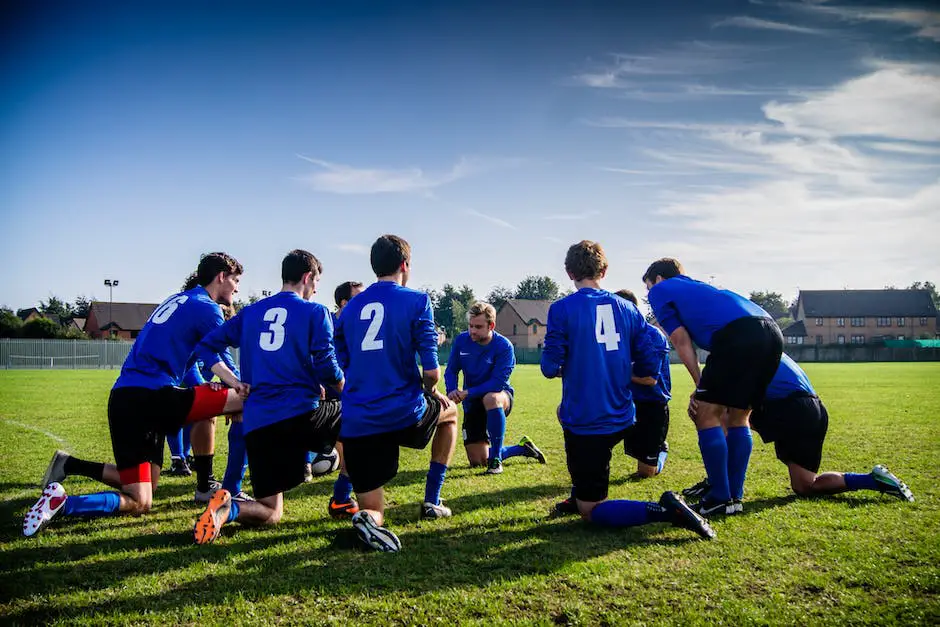
Inspirational Stories of Female Athletes
An Inspiration for Many: Wilma Rudolph
Wilma Rudolph, a legendary figure in the realm of women’s athletics, serves as a testament to this spirit of resilience and determination. Despite being born prematurely and contracting polio, which threatened to confine her to a life of immobility, Rudolph rose, quite literally, to become a standout athlete. In the 1960 Olympics held in Rome, she etched her name in history by becoming the first American woman to secure three gold medals in a single competition. Her groundbreaking achievements have since then lit the path for generations of female athletes to challenge and overcome adversity.
Billie Jean King: An Icon for Equality in Sports
In the world of tennis, Billie Jean King is a pioneer for advocating for women’s equality in sports. One of her most renowned matches, known as the Battle of the Sexes, took place in 1973 when she beat Bobby Riggs, a highly-ranked male tennis player. This victory served to shatter stereotypes about female athletes. King also fought for equal prize money for women in tennis, creating a significant impact in raising the visibility and treatment of women in sports.
Mia Hamm: Leading the Charge for Women’s Soccer
Mia Hamm, an American retired professional soccer player, has won two Olympic gold medals and two FIFA Women’s World Cup championships with the U.S. soccer team. Hamm, often considered one of the best women soccer players in history, played a crucial role in increasing the popularity of women’s soccer in the United States. As a result of her efforts to promote women’s soccer, an outpouring of support and interest in the sport emerged, leading to the establishment of professional women’s soccer leagues in America.
Pat Summitt: A Trailblazer for Women’s Collegiate Basketball
Pat Summitt is a formidable figure in the realm of women’s sports. As a coach, Summitt led the University of Tennessee Lady Volunteers basketball team to an unparalleled eight NCAA championships, making her one of the most successful coaches in NCAA history. Beyond her incredible record, Summitt is recognized for her relentless advocacy for gender equality in sports. Her dedication as a coach and advocate has shaped the landscape of women’s collegiate sports.
Serena Williams: Inspiring a New Generation of Women Athletes
Serena Williams is a force to reckon with in modern women’s tennis. She has bagged an impressive 23 Grand Slam singles titles, marking an open-era record. Williams has used her high-profile position within sports to address a myriad of pertinent social and cultural issues, including body positivity and racial equality. Furthermore, her powerful personality and continued success on and off the court inspire a new generation of young female athletes.
Unfolding across a spectrum of sports, inspirational tales of relentless women athletes have significantly transformed the landscape of female participation. With strength and resilience emanating from each endeavor, these women have continued to forge ahead undeterred by the challenges and obstacles they encounter. Their steadfast determination underlines every triumph, every record shattered, ultimately redefining what it means to be a woman in sports.
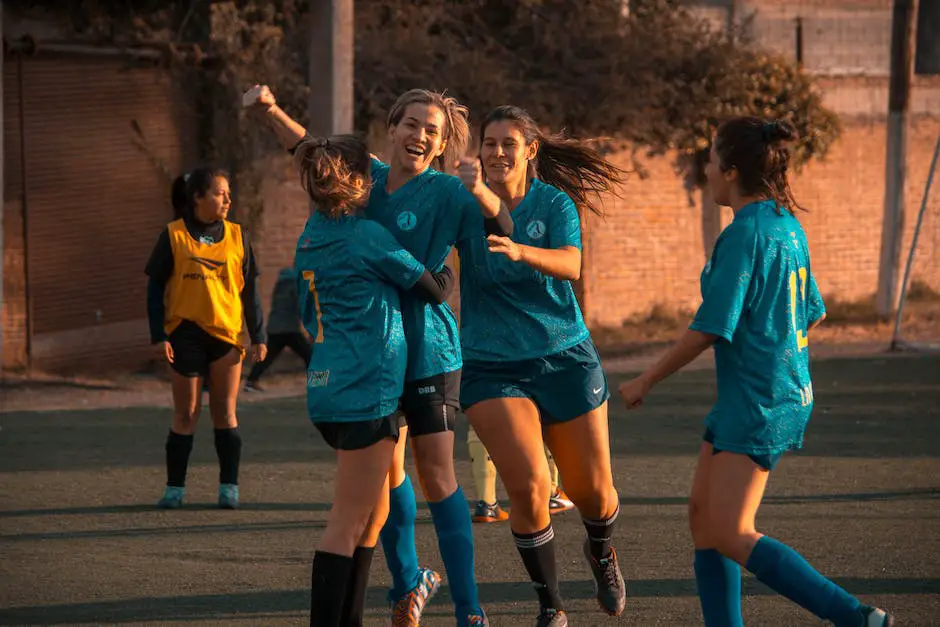
The Future of Women in Sports
The Untapped Potential: Improving the Stand of Women in the Sporting Arena
Despite the strides made, there remains an extensive potential for enhancement in creating a level playing field for women in sports. Focusing on their representation and prominence within the sphere, women are notably underrepresented in positions of power and authority in domestic and international sports organizations. The scarcity of professional women’s leagues significantly limits their chances to participate at a professional level. In addition, a substantial gender pay gap in sports remains a pressing issue. Even at the pinnacle of their abilities and competition, female athletes regularly earn significantly less than their male counterparts. Such disparities, therefore, need immediate attention and resolution.
Strategies to Enhance Women’s Presence in Sports
To address the above issues, strategies should be implemented to increase women’s presence, participation, and recognition in sports. For instance, there should be concerted effort to develop more professional sports leagues for women. This would provide more opportunities for women to play sports professionally, increasing their visibility and recognition in the larger public sphere.
Moreover, efforts should be made to increase the representation of women in sports organizations’ decision-making bodies. This could be achieved through gender quotas and by creating culture within the organization that values diversity and inclusive leadership.
Additionally, the gender pay gap in sports should be tackled head-on. This may involve a combination of increased pay for women athletes, greater investment in women’s sports, and better marketing and promotion of women’s sports to increase their visibility and commercial value.
The Role of Societal Norms
Societal norms play a critical role in shaping the future of women in sports. Cultural perceptions about gender can influence who is seen as legitimate or appropriate participants in sport. Stereotypes that portray athleticism as inherently masculine can discourage women and girls from participating or create barriers for those who do.
Breaking these societal norms is a vital part of improving women’s participation and representation in sports. It requires targeted initiatives to promote women’s sports, showcasing strong and capable women athletes as role models, and carrying out public awareness campaigns to challenge gender stereotypes and boost societal acceptance.
Legal Guidelines and the Future of Women in Sports
Finally, the role of legal guidelines should not be underestimated in shaping the future of women in sports. Laws and regulations that protect gender equality can support women’s advancement in sports. For example, Title IX of the United States’ Education Amendments of 1972 protects people from discrimination based on sex in any educational program or activity that receives federal financial assistance. This had a huge impact on women’s sports, leading to significant increases in participation.
To push for further progress, it’s important to advocate for strong, enforceable laws and regulations that ensure gender equity in sports. This includes not only equality of opportunity but also equality of resources, compensation, and treatment.
Taken together, these different strategies, understanding of societal norms, and efforts toward stricter legal guidelines narrate the grand picture for the future women in sports – a future that is slowly but assertively bending towards equality and representation.
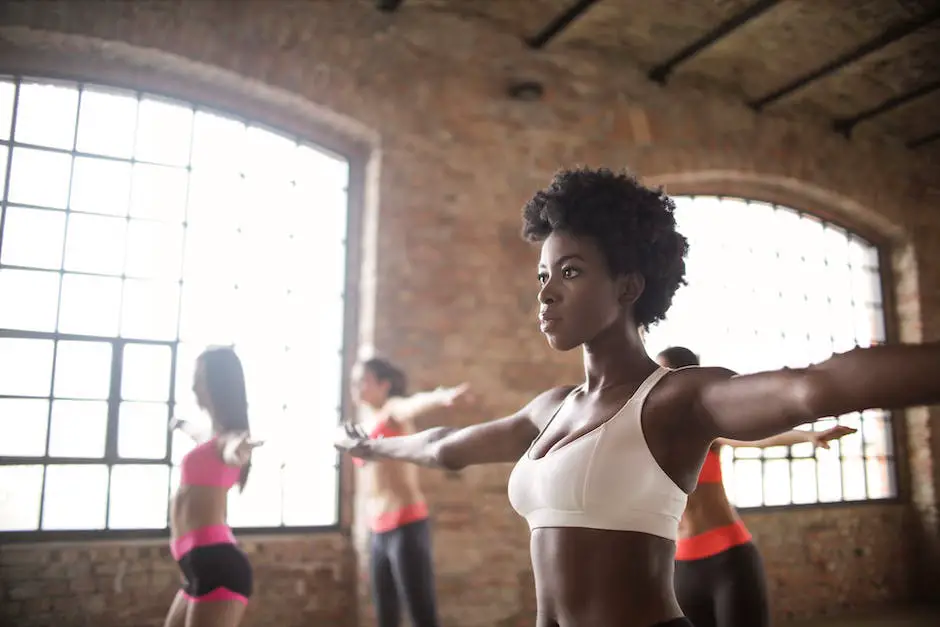
Throughout the essay, we have seen the diverse journeys of women in sports, both across history and in the current landscape. They have overcome tribulations and broken down barriers, garnering newfound recognition and respect. Despite the monumental strides made, there still remains work to be done to address the entrenched disparities that continue to affect the landscape of women in sports. As we glimpse into the potential future, it becomes imperative to implement strategies that promote and foster an environment promoting gender equality across all facets of sport, from representation to remuneration. Changing societal norms and implementing apt legal guidelines will play crucial roles in shaping a future where gender neutrality in sports is the norm, not an exception. The influence and implications of these changes will resonate beyond sports, impacting society as a whole, underlining the importance of fostering an inclusive culture in sports for all.
